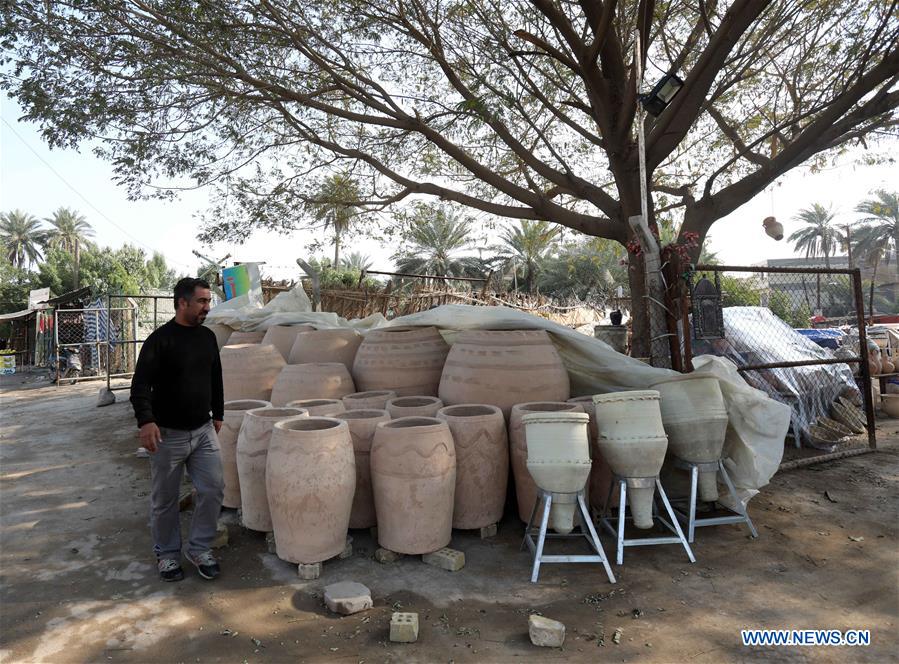
A customer checks clay ovens from a clay product store in northern Baghdad, Iraq, Feb. 17, 2020. Despite the growing challenge from modern household appliances, like the steel oven heated by electricity or propane fuel, the traditional clay oven still plays an important role in Iraqis' daily life. TO GO WITH "Feature: Iraqis fond of traditional clay ovens, despite modern appliances" (Xinhua/Khalil Dawood)
BAGHDAD, Feb. 26 (Xinhua) -- "When I was young, I used to have a piece of delicious hot bread (locally known as Khubuz) baked in al-Tanoor, or traditional clay oven, for breakfast," said Jasim al-Hamdani, who lives in Baghdad's northern suburb of Rashdiyah.
Al-Hamdani, 65, said he prefers al-Tanoor to bake the Iraqi Khubuz as it gives the traditional bread a special flavor of the clay and the wood burning in the oven.
Despite the growing challenge from modern household appliances, like the steel oven heated by electricity or propane fuel, the traditional clay oven still plays an important role in Iraqis' daily life.
Mohammad Hashim, a teacher at the Institute of Handicrafts and Heritage in Baghdad, said "the industry of traditional clay oven maintains its presence as long as most Iraqis prefer the flavor of the Iraqi Khubuz, and as long as the clay ovens' makers enjoy their traditional craftsmanship and find it a feasible way of making a living."
Hashim told Xinhua "the clay oven is part of the Iraqi heritage, and it has a history of thousands of years, as there are many signs in the country's history indicating the spread of such popular crafts."
According to archeological information, the city of Mosul in northern Iraq was one of the oldest cities with clay oven industry, Hashim added.
In Baghdad's northern neighborhood of Kadhmiyah, 17-year-old Sebttain Mejbil, who works with his family on making clay ovens, said he and his family are keen on the continuation of their handicraft as it is part of the heritage of the country.
"Only a few people are working on this handicraft now. We are here in Baghdad, and my uncles in Kufa, and we are trying to preserve this handicraft," Mejbil, who left school to join his father in the work, told Xinhua.
To make the traditional clay oven, the makers need to bring the special red mud from a plain near the city of Najaf, some 160 km south of Baghdad. Then the workers should mix it very well by their feet before they build the oven by coiling the clay from bottom to top.
The new al-Tanoor must be left in the sun for several days to dry and harden before being ready to use. The bakers can stick the dough on the inside walls of the clay oven.
Another clay oven maker, Abbas Yahya, 20, said he inherited this crafts from his family.
"My grandfather has worked on this craft for some 60 years, and my father inherited it, and I also learned the craft from the family. We are trying to revive this handicraft because it is our heritage," Yahya said.
Saad Sabah, 30, a clay oven maker and a shop owner of clay products, told Xinhua that most of his customers are owners of bakeries and restaurants, as many families still prefer the taste of Iraqi Khubuz made in the traditional al-Tanoor.
According to the makers, the demand on clay ovens has increased as many luxurious restaurants and some households are starting to use the traditional al-Tanoors to attract customers.



